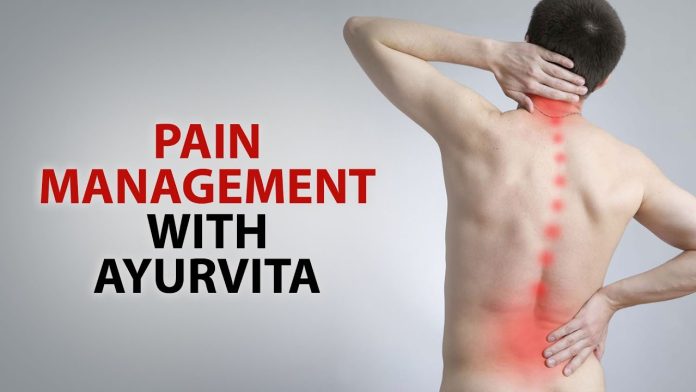Estimated reading time: 0 minutes
Vesiculobullous skin disorders, characterized by the formation of blisters and erosions on the skin and mucous membranes, pose a formidable challenge when it comes to pain management. Conditions such as Pemphigus Vulgaris, Bullous Pemphigoid, and Dermatitis Herpetiformis not only inflict physical discomfort but also profoundly impact the quality of life due to the chronic pain they induce. Effectively addressing pain in these disorders is imperative for ensuring patient comfort, treatment adherence, and overall well-being.
Grasping Pain in Vesiculobullous Disorders: An Ayurvedic Insight
1. Origins of Pain:
From an Ayurvedic standpoint, pain in vesiculobullous diseases can be attributed to an imbalance of the three doshas (Vata, Pitta, and Kapha) within the body. The formation of blisters and erosions corresponds to aggravated Pitta dosha, responsible for metabolic activities and inflammation. Ayurveda recognizes that imbalances in Pitta can lead to heightened pain perception.
2. Ramifications of Chronic Pain:
Ayurveda acknowledges that chronic pain not only affects the physical body but also disrupts the harmony of the mind and spirit. It can contribute to disturbances in the doshic equilibrium and exacerbate feelings of psychological distress.
Approaches to Pain Management: An Ayurvedic Integration
1. Topical Solutions: Ayurveda advocates the use of natural remedies like Aloe Vera gel, Neem oil, or Sandalwood paste, which possess cooling properties to alleviate the burning sensation and pain associated with vesiculobullous conditions. These remedies can be applied topically to erosive lesions.
2. Oral Pain Relief: Ayurvedic herbal preparations like Shallaki (Boswellia serrata) or Guggulu (Commiphora wightii) have anti-inflammatory and analgesic properties. They can be used to manage pain while addressing the underlying doshic imbalances. Ayurvedic practitioners may prescribe these herbal formulations as an alternative or complementary option to conventional pain medication.
3. Wound Care: Ayurveda emphasizes the use of natural ingredients like Turmeric (Curcuma longa) paste or Triphala (a combination of three fruits) decoctions for wound cleansing and healing. These natural remedies can aid in reducing pain while promoting the natural healing process.
4. Management of Disease Activity: Ayurveda offers personalized treatments based on an individual’s doshic constitution. Ayurvedic therapies such as Panchakarma, tailored herbal formulations, and dietary modifications are employed to control disease activity and alleviate pain by restoring doshic balance.
5. Physical Therapy and Rehabilitation: Ayurvedic Yoga and Marma therapy can complement physical therapy by enhancing mobility, reducing inflammation, and alleviating pain. These therapies consider the doshic constitution of the individual for a holistic approach to pain management.
Holistic and Alternative Strategies: An Ayurvedic Approach
1. Stress Mitigation: Ayurveda recognizes the interconnectedness of the body, mind, and spirit. Stress management in Ayurveda involves practices like Pranayama (breathing exercises), meditation, and Abhyanga (self-massage) to balance the doshas, reduce stress, and alleviate pain perception.
2. Dietary Considerations: Ayurvedic dietary principles focus on pacifying aggravated doshas. For instance, individuals with increased Pitta may benefit from a diet rich in cooling foods like cucumber, mint, and coriander. Ayurvedic nutrition aims to reduce inflammation and pain through dietary adjustments.
3. Supplementary Therapies: Ayurveda employs Rasayana (rejuvenation) therapies to enhance overall well-being. Rasayana herbs and preparations are used to support the body’s natural healing processes, potentially reducing pain and discomfort.
The Significance of Patient Education and Support
Educating patients about Ayurvedic principles and their doshic constitution can empower them to make informed choices in managing pain. Ayurvedic support groups and consultations with trained Ayurvedic practitioners can provide emotional support and practical guidance in integrating Ayurvedic approaches into their pain management regimen.
An Integrated Approach
Effectively addressing pain in vesiculobullous skin disorders demands an integrated approach that merges conventional medical interventions with Ayurvedic wisdom. By amalgamating these two systems of healthcare, healthcare providers can provide comprehensive pain management that encompasses physical, psychological, and spiritual well-being. This holistic approach holds the potential to alleviate the pain associated with these disorders, thereby enhancing the quality of life for affected individuals and promoting treatment compliance. As research progresses, the fusion of these two diverse yet complementary systems promises to offer further relief to those contending with these intricate skin conditions.
Related-
Know More About Ayurveda Treatment For skin Dermatology.
GET IN TOUCH


Recent comments